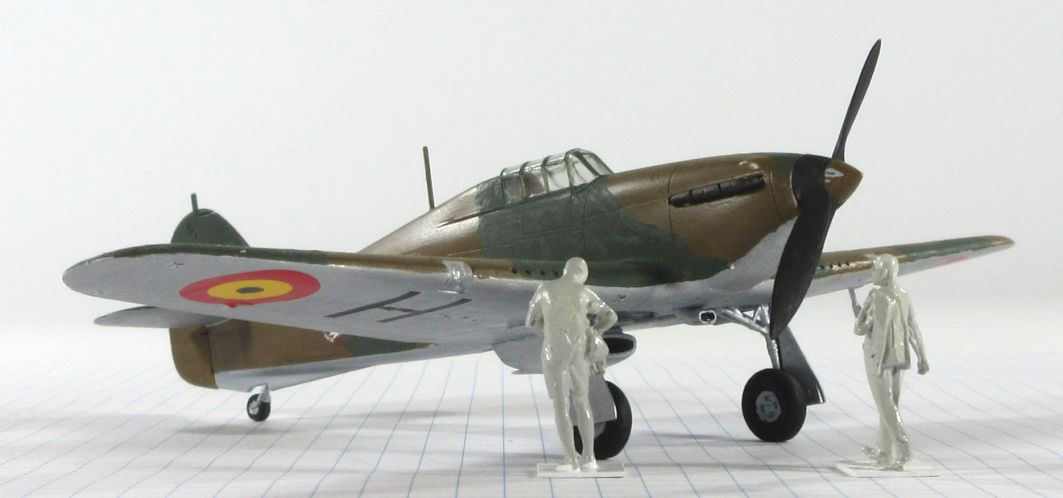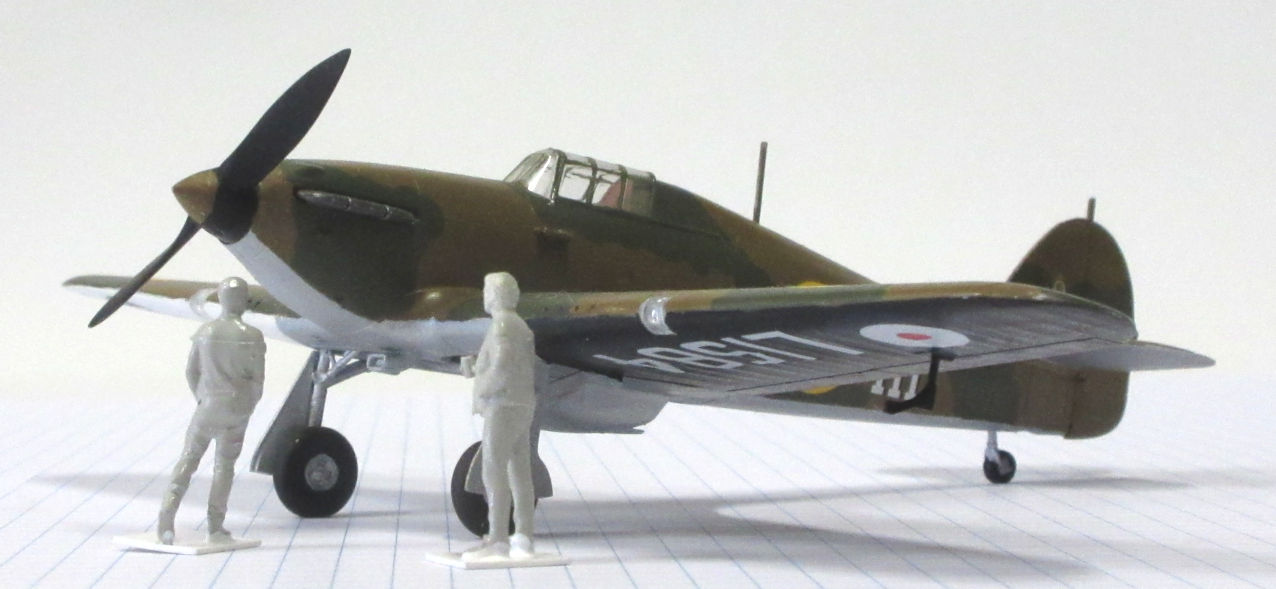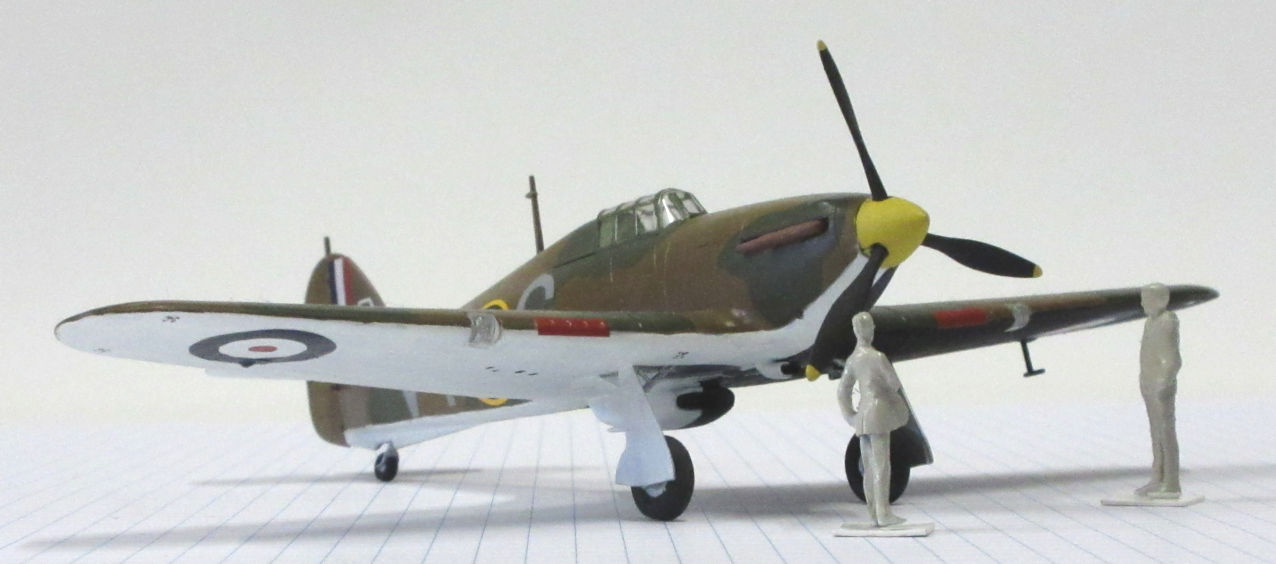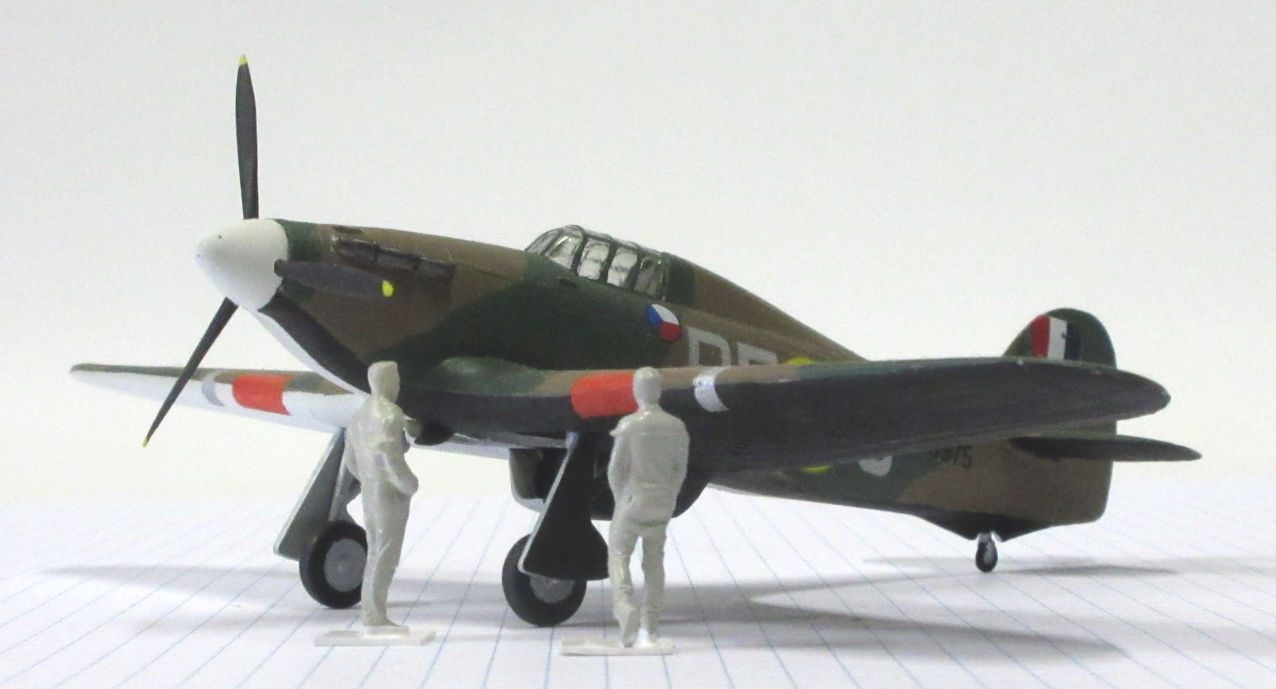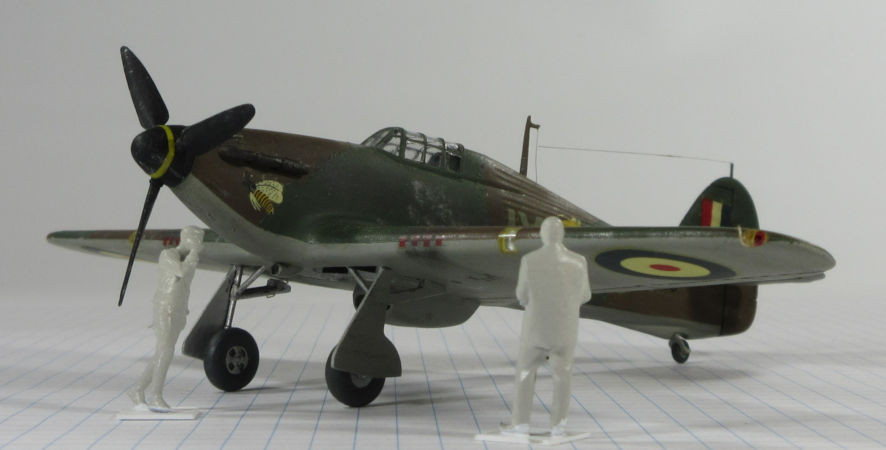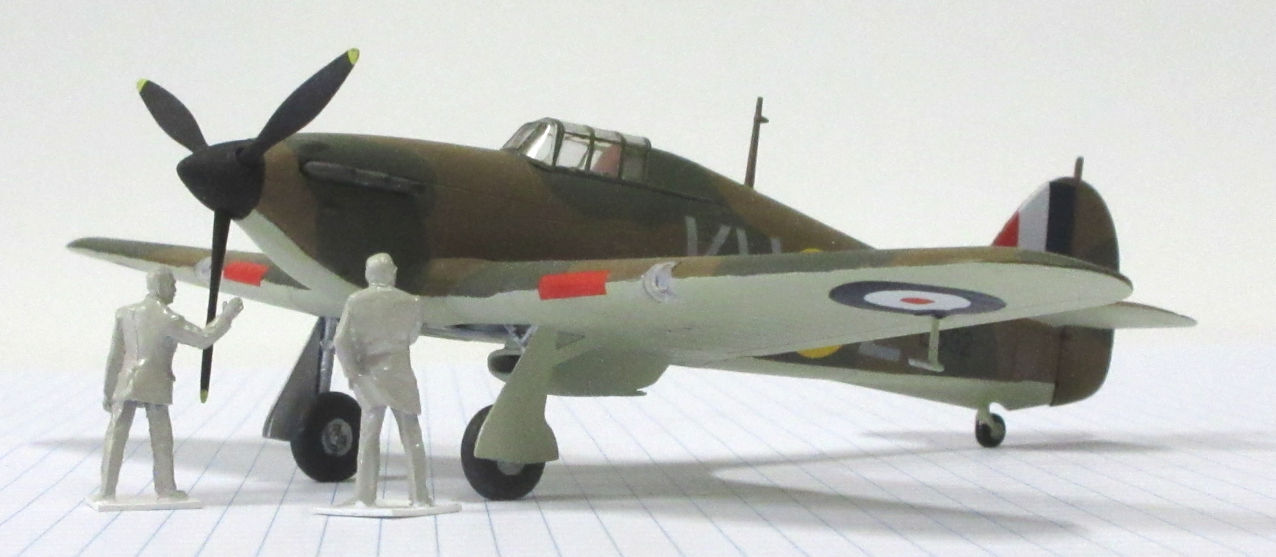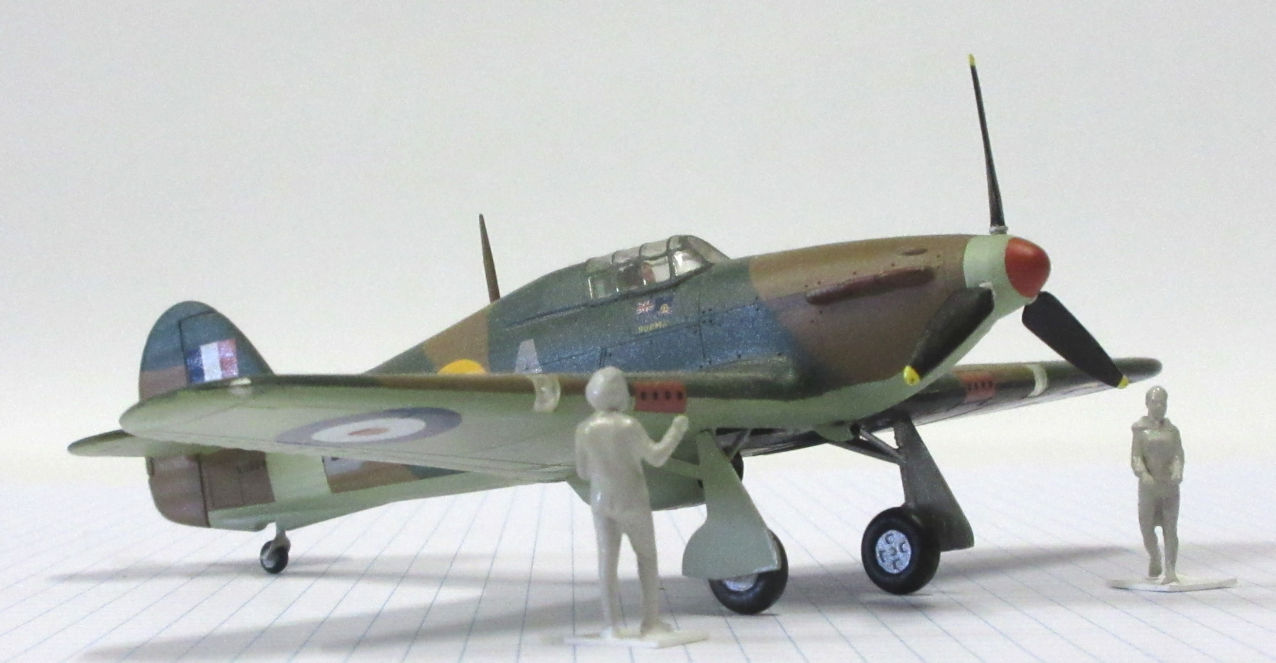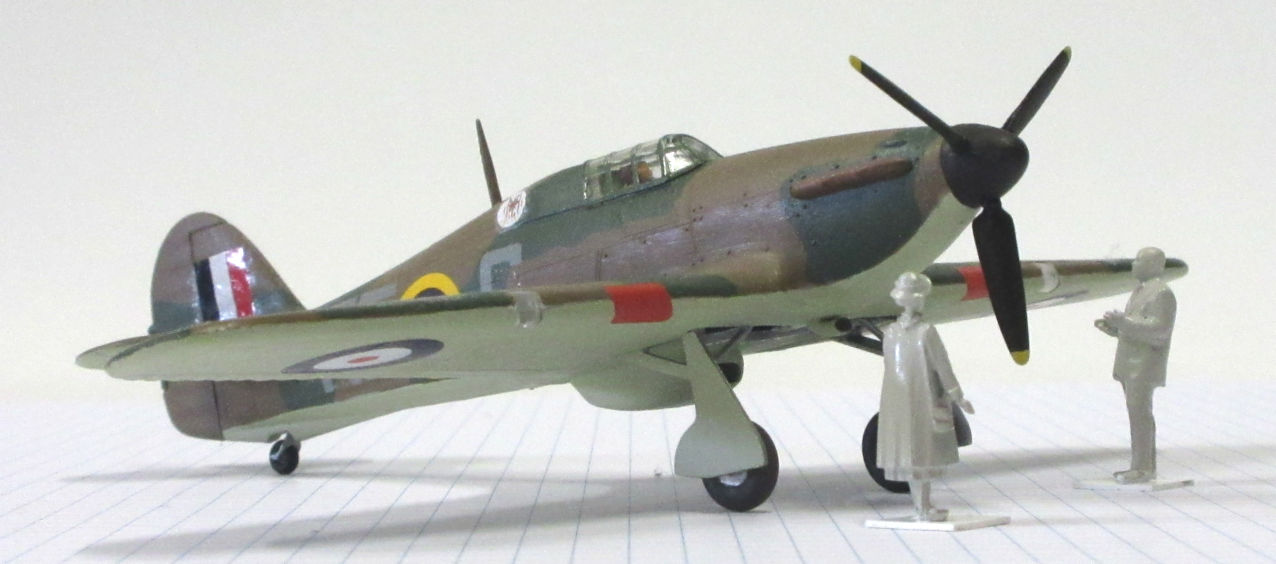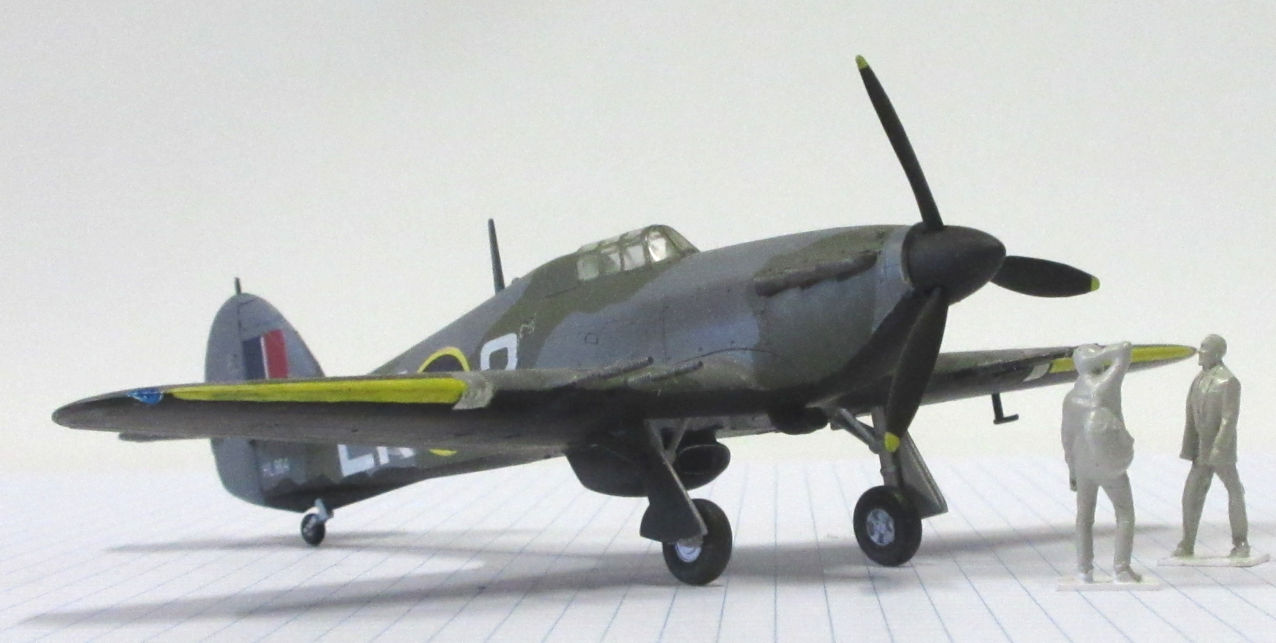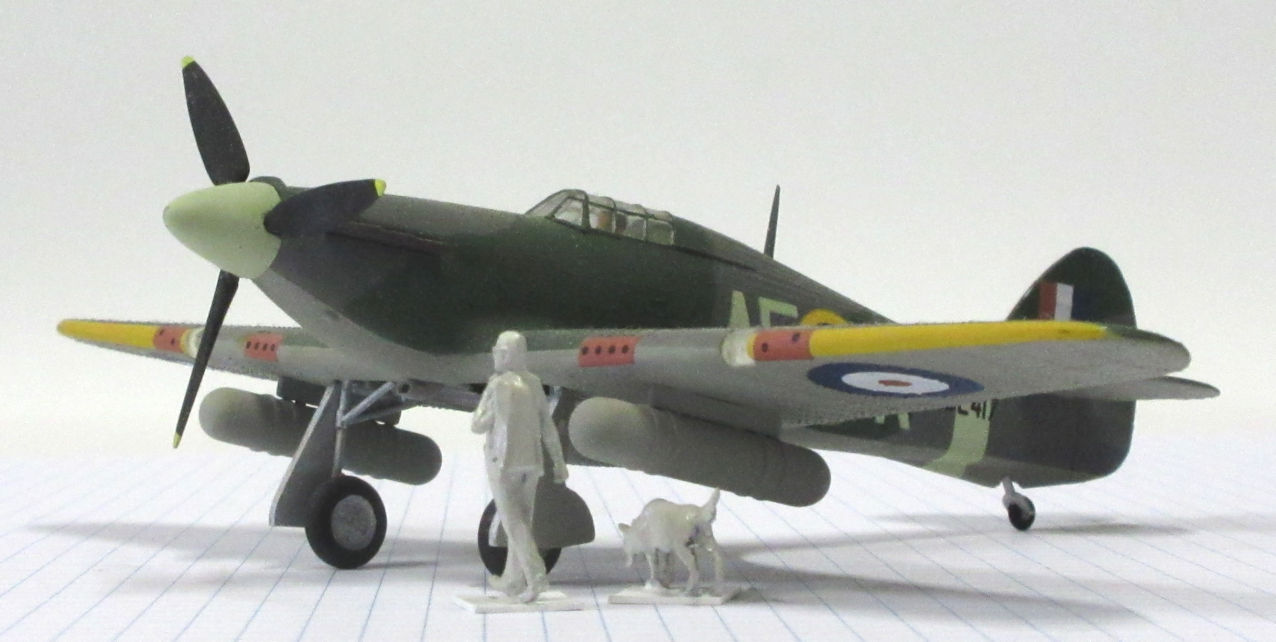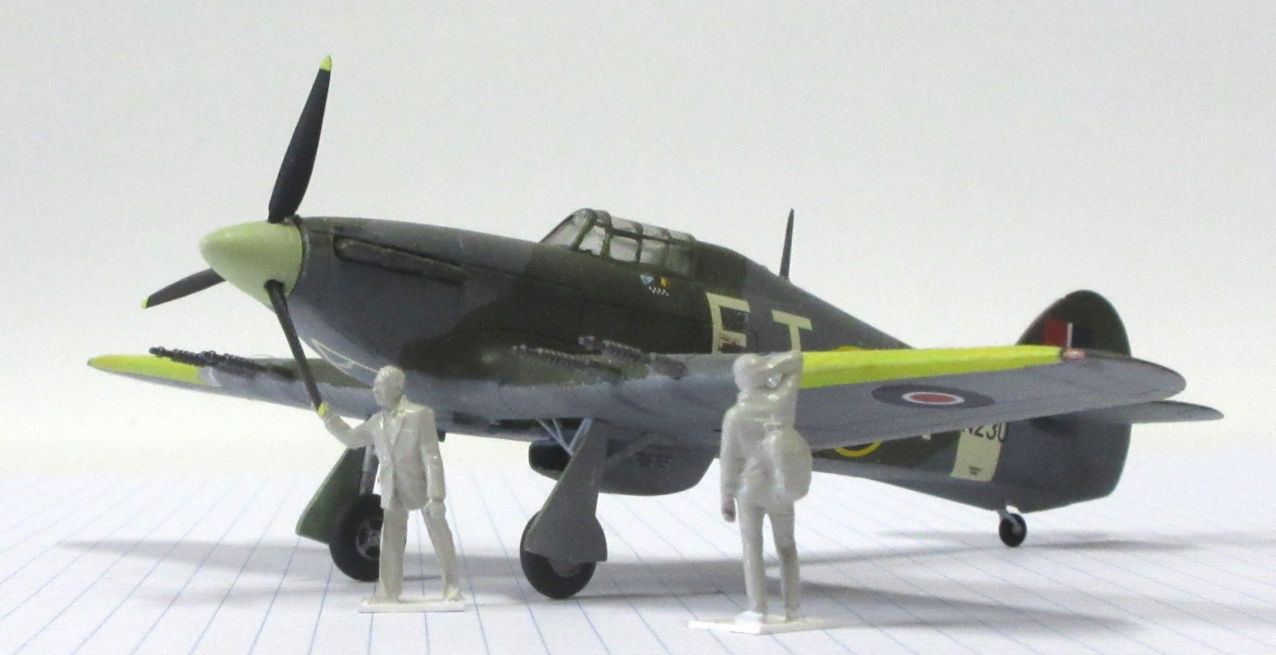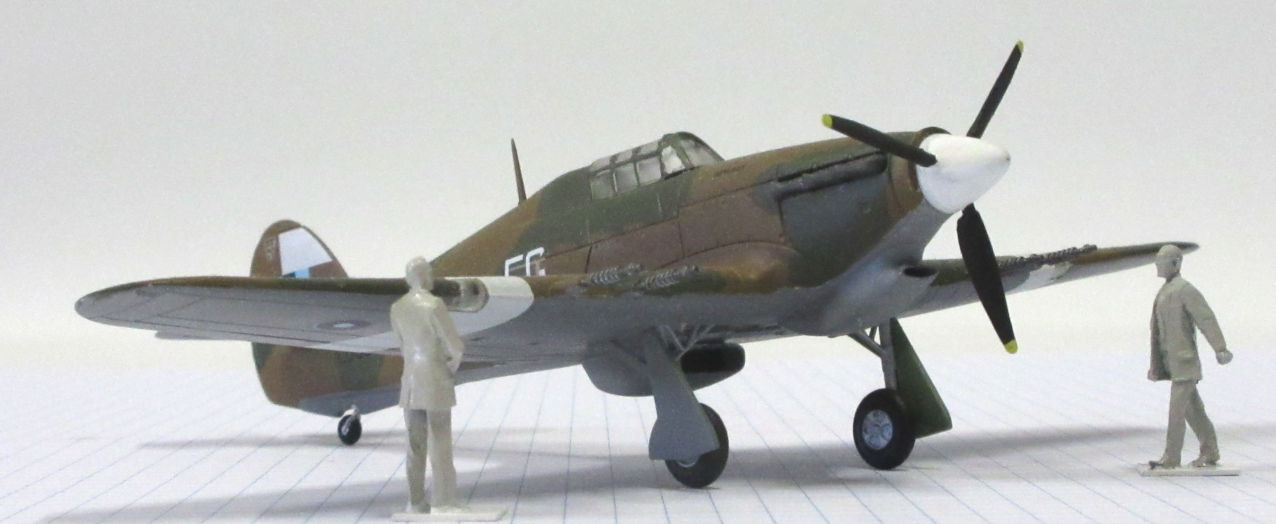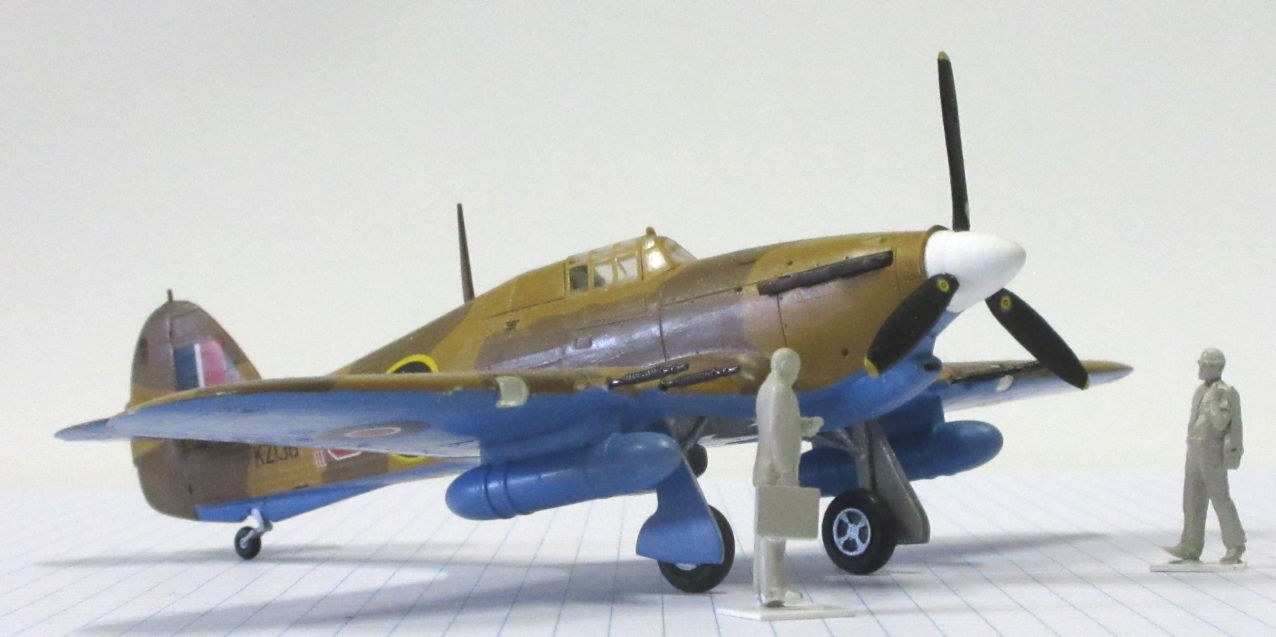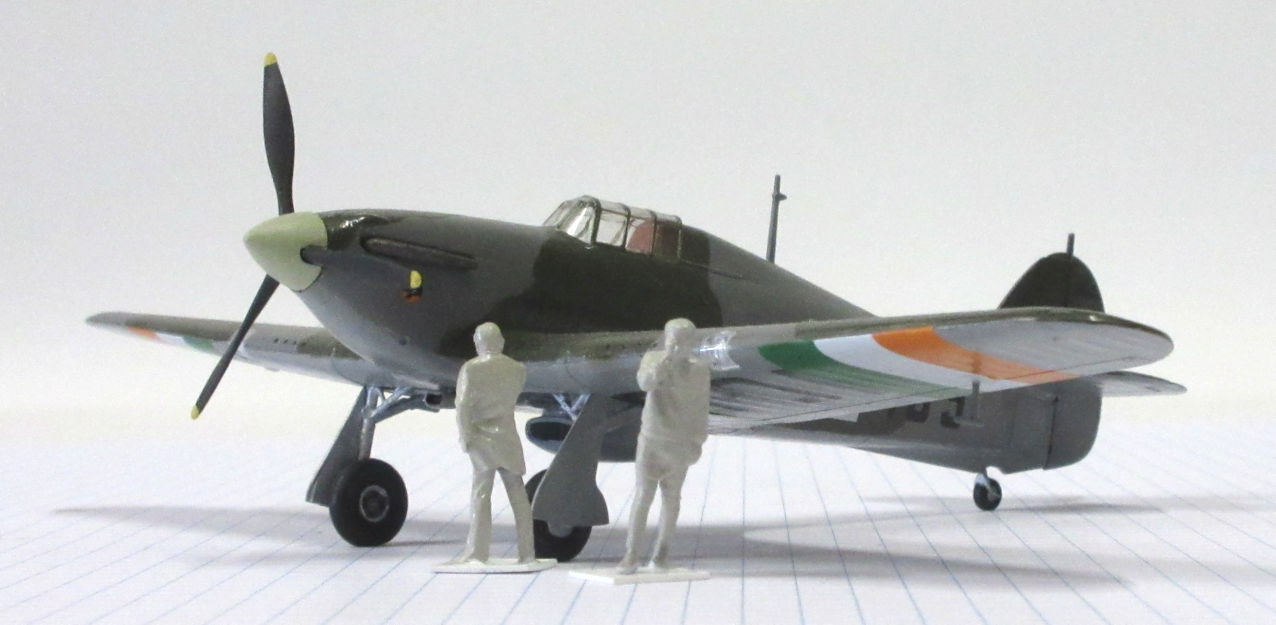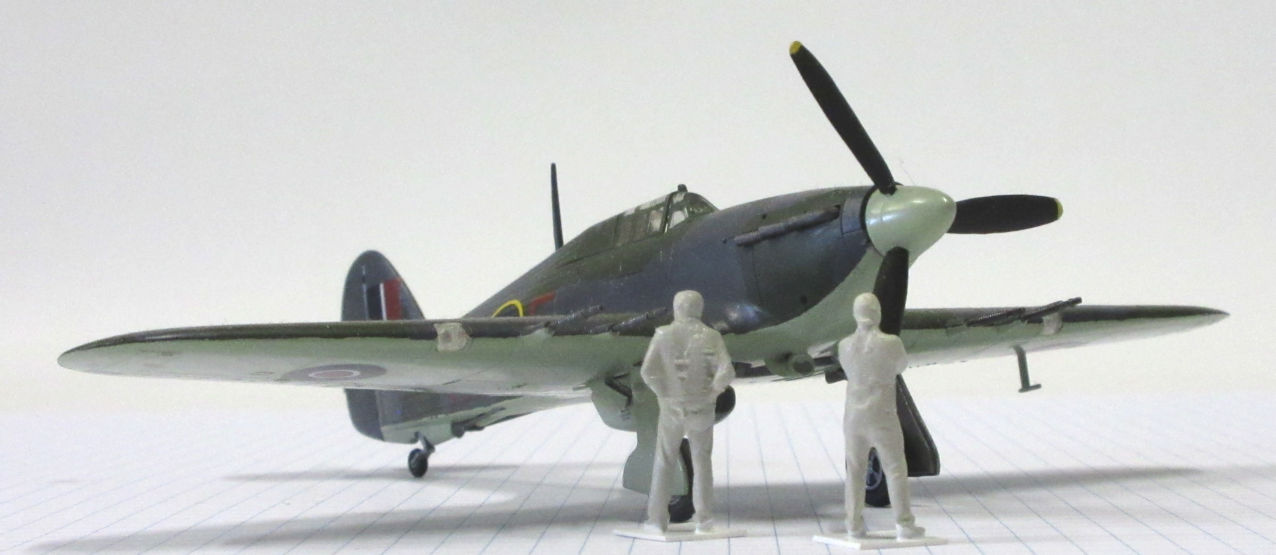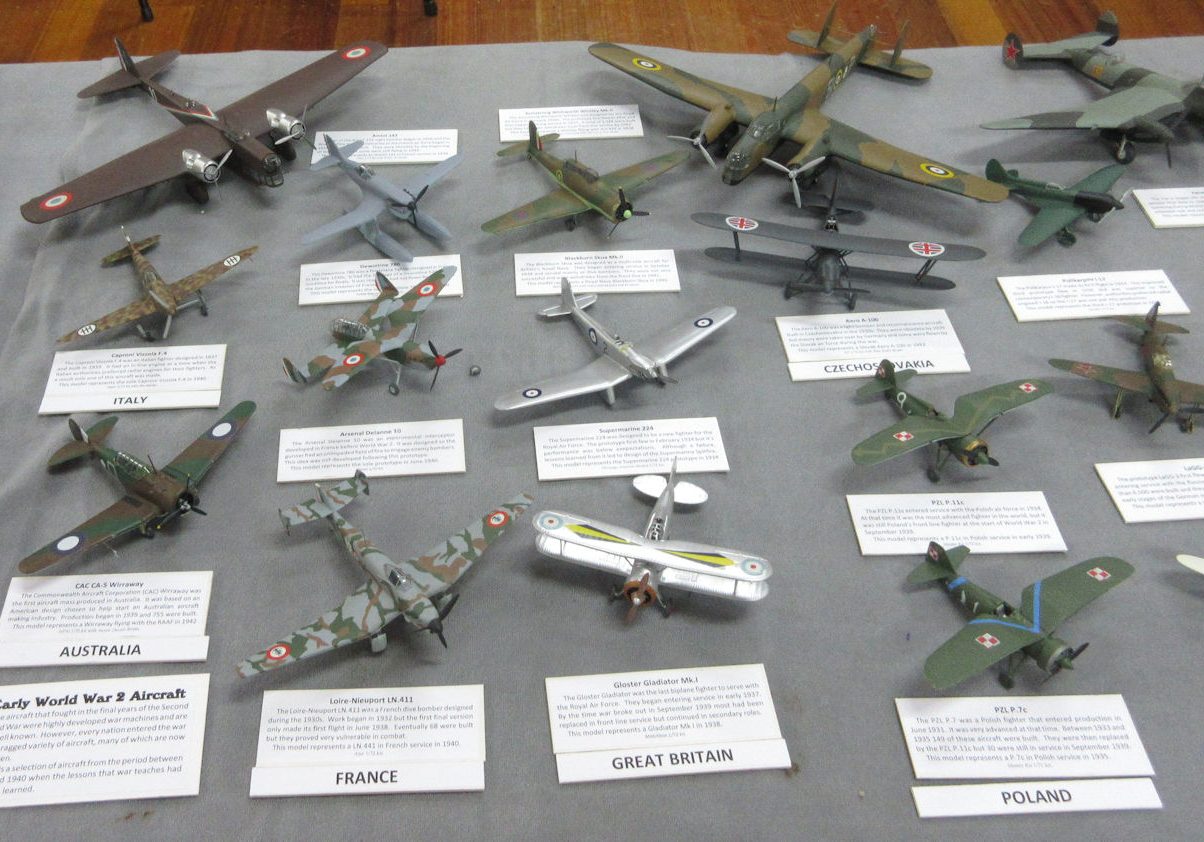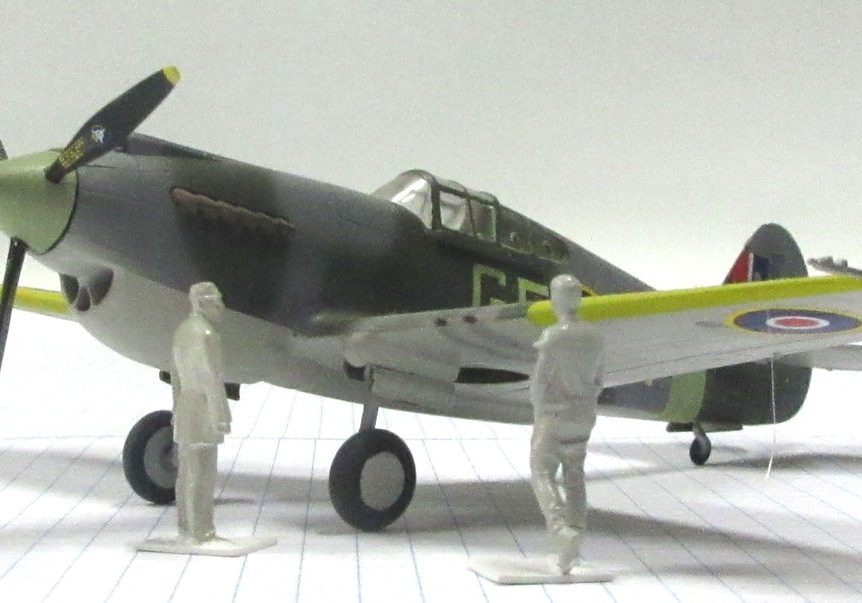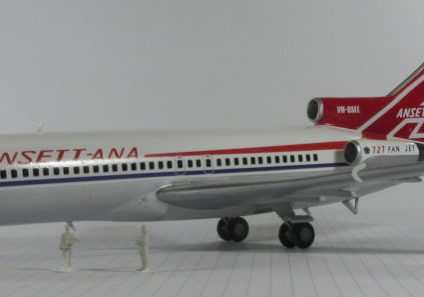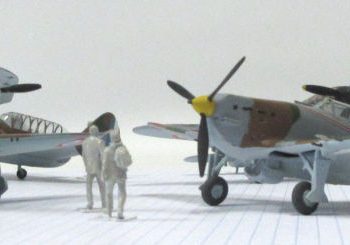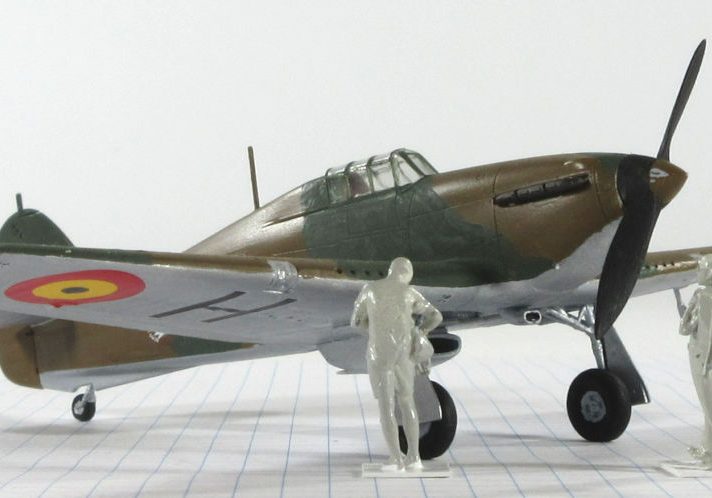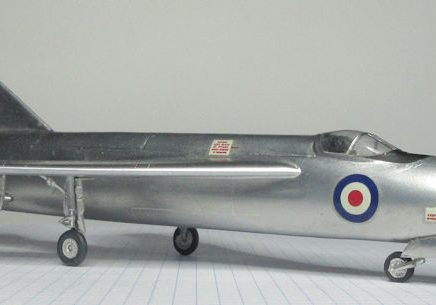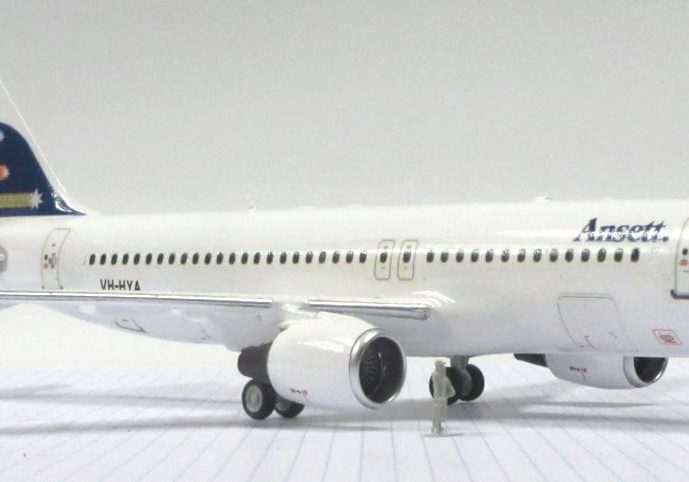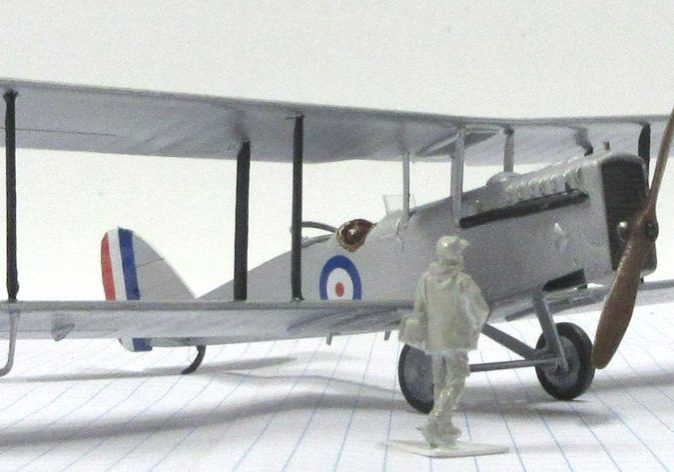Hawker Hurricane Mk.I
In 1934 Hawker began to develop a monoplane fighter using the manufacturing techniques used in building their very successful Hart/Fury biplane series. The aircraft featured a tubular steel frame with cloth covering.
The new aircraft incorporated an enclose cockpit, retractable undercarriage and used the new Rolls-Royce PV.12 engine, later named the Merlin.
The authorities were initially disinterested in the aircraft so in 1936, Hawker tooled up to produce 1000 aircraft.
In mid-36, the Air Ministry finally took notice and ordered 600 aircraft.
The first deliveries to Squadrons commenced in Dec 37.
When initially flown, the Hurricane was considered as revolutionary but still included some archaic features. The aircraft was initially fitted with a 2 bladed wooden propeller and had fabric covered wings.
The performance aircraft of the aircraft was disappointing but replacement of the propeller with a constant speed type and replacement of the wings to a stressed skin type transformed the performance from disappointing to acceptable mediocrity.
One old feature that worked in its favour was the fabric over steel tube construction.
The Hurricane was able to absorb a lot of punishment as bullets and cannon shells often passed straight through without damaging the structure.
The airframes could easily be repaired without the use of specialist tooling and a network of civilian companies was set up to overhaul the aircraft.
The aircraft only required 2/3 of the time required to build compared to the Spitfire.
Hawker Hurricane Mk.I (Belgium)
By mid 38, Hurricanes were being produced at a rate beyond which the RAF could absorb.
The British Government gave Hawker the permission to sell excess aircraft to nations likely to oppose German expansion.
Avions Fairey SA built 14 for the Belgian Air Force, some taking part in combat before Belgium was overrun.
Hawker Hurricane I, 111 Squadron RAF, July 1938
Hawker Hurricane Mk.I – flying with 85 Squadron, RAF, during the Battle of Britain
85 Sqn RAF replaced its Gladiator fighters for Hurricanes in September 1938.
At the outbreak of the war it deployed to France with 16 Hurricanes. It’s primary role was to provide support to Bristol Blenheim and Fairey Battle bomber as well as air defence of airfields.
During the early ‘Phoney war’ period, 85 Squadron performed patrols over the English Channel with its first victory being a German He111 bomber in November 1939.
When the German invasion occurred in May 1940 the squadron was locked in a bitter battle with attacks on airfields leading to little respite from operations.
In an eleven day period, the squadron accounted for 90 confirmed victories and lost 17 pilots.
The squadron provided air cover for the Allied armies until its airfields were overrun and 4 aircraft returned to Britain.
The Squadron re-equipped during June 1940 and took part in the Battle of Britain.
It moved to Yorkshire in September and changed role to night operations in October when its Hurricanes were swapped out for Defiants.
Hawker Hurricane Mk.I – flown by Josef Frantisek of 303 Polish Squadron (RAF) during the Battle of Britain
Jozef Frantisek was a Czechoslovakian Pilot that had escaped to Poland after the Nazi annexation of Czechoslovakia. He joined the Polish Air Force as a result of a coin toss.
With the fall of Poland, Frantisek escaped to Romania and from there, travelled to Beirut where he joined the French Foreign Legion. He was sent to Marseille for training and joined the Free Polish Air Force at le Bourget. There he was accredited with 9 aerial victories according to some sources.
With the fall of France, Frantisek fled to Britain being assigned to Polish 303 Sqn. In the RAF, he was seen as a brilliant but unruly pilot that was a danger to his colleagues when flying in formation. He was allocated a spare aircraft and allowed to fly as guest with the Sqn.
During the later stage of the Battle of Britain, Frantisek scored 17 victories in a 4 week period becoming the highest scoring non-British ace of the BoB. Frantisek was killed in a crash during the last week of the BoB. He was allegedly performing aerobatics outside his girlfriends house.
Hawker Hurricane Mk.I flying with No 1 Squadron, RAF, in 1940
Hawker Hurricane Mk.I flown of 615 Squadron, RAF, during the Battle of Britain
Hawker Hurricane Mk.I flown by Robert Stanford Tuck, Commander of 257 Squadron, RAF, during the Battle of Britain
Hawker Hurricane Mk.I flown in 303 Squadron, RAF, during the Battle of Britain
Hawker Hurricane IIc flown by 87 Squadron, RAF, between 1941 and 1944
Hawker Hurricane IIb flown by 402 Squadron, RCAF, around November 1941
Hawker Hurricane II flown by 6 Squadron, RAF, over the Western Desert between 1942 and 1944
Hawker Hurricane Mk.II flown by 43 Squadron, RAF, during the Dieppe Raid in August 1942
Hawker Hurricane Mk.II flown by 34 Squadron in the Indian Air Force in 1943
Hawker Hurricane IIc flying with 335 (Greek) Squadron, RAF, in the Western Desert in 1943
Hurricane Hurricane Mk.I flying for the Irish Air Corps in 1944
Hawker Sea Hurricane IIc, 760 Naval Air Squadron, FAA, 1944
